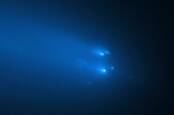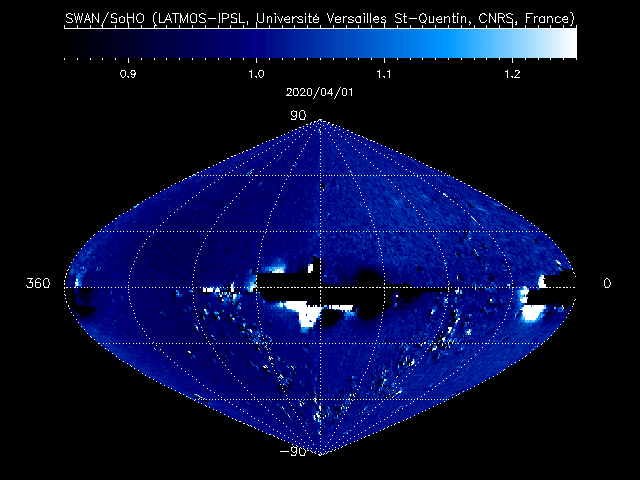This article is more than 1 year old
There's a new comet in town and you don't need a fancy multi-million-dollar telescope to see it. Just regular eyeballs
One other minimum requirement: You need to be in the southern hemisphere
The venerable Solar Heliospheric Observatory (SOHO), run by NASA and ESA, has discovered a new comet faintly visible right now with the naked eye from Earth's southern hemisphere.
As SOHO scanned the heavens for sources of ultraviolet light, the orbiting telescope clocked a bright blob moving through the Solar System.
That blob is a comet, which is shedding water vapor from its icy core as it's melted by the Sun's heat. The solar radiation is also splitting the liquid into hydrogen atoms and hydrogen-oxygen pairs. The cloud of hydrogen atoms emitted a type of ultraviolet radiation called Lyman-alpha light that's visible to the satellite's Solar Wind ANisotropies (SWAN) instrument.
Amateur astronomer Michael Mattiazzo spotted the comet – named C/2020 F8, or SWAN after the instrument – after spotting it hurtling by Earth in April using publicly available data from the probe.
Professor Michael Combi, of the University of Michigan’s Climate and Space Sciences and Engineering department and a member of the SWAN team, estimated that by April 15 the space rock was spewing about 1,300 kilograms of water vapor per second.
"This is already three times more than Comet 67P/Churyumov-Gerasimenko at its best, when it was visited by ESA's Rosetta mission between 2014 and 2016," said Jean-Loup Bertaux, former principal investigator and proposer of the SWAN instrument.

ATLAS flubbed: Comet heading our way takes one look at Earth, self-destructs into house-sized chunks
READ MOREAlthough the comet made its closest approach on May 13 when it was about 53 million miles from Earth, it should stay just about visible throughout the end of May and into June. The best time to catch it is just before sunrise in the southern hemisphere; the object should be, in theory, just bright enough to be spotted with the naked eye, according to NASA.
Comet SWAN is the 3,932nd ice ball clocked using SOHO, an admirable achievement for the 25-year-old satellite considering it was planned to operate for just two years to map solar winds. Most of those discoveries, however, were made using its coronagraph instrument that studies the Sun’s outer shell while blocking out its central sunlight.
“It's extremely exciting that our sun-watching observatory has spotted so many comets since its launch in 1995," said Bernhard Fleck, ESA SOHO project scientist. "We are eagerly awaiting, along with comet enthusiasts around the world, for the 4,000th discovery, which might happen real soon."
That job has mostly been fulfilled by armchair astronomers scrolling through images taken from SOHO and NASA’s Solar Terrestrial Relations Observatory (STEREO) as part of the online Sungrazer Project.
“Almost all of SOHO's comet discoveries so far have been made by citizen scientists scouring images returned by SOHO's LASCO instrument," said Karl Battams, a lead researcher on the project and a comet expert at the US Naval Research Laboratory. ®

